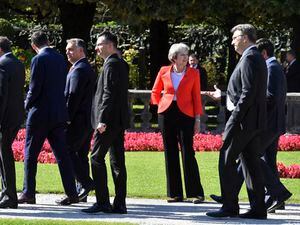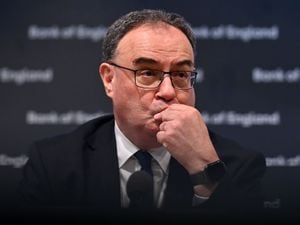What are the choices facing the PM as the Brexit deadline draws nearer?
Theresa May is sticking with her Chequers plan – but what other options are open to her?

Despite its emphatic rejection by EU leaders in Salzburg, Theresa May has refused to ditch the Brexit plan agreed by the Cabinet at Chequers.
But as the scheduled date for UK withdrawal from the EU on March 29 draws nearer, she is likely to come under intense pressure to change course. What are the options open to her?
Stick with Chequers
In her Downing Street statement, the Prime Minister insisted the blueprint agreed at her country retreat is still the only credible plan for Brexit.
She has promised to tweak her proposals for the Irish border in time for next month’s Brussels summit in the hope of making it more palatable for the EU, but this would still leave massive differences over trade.
The EU has a record of taking negotiations to the wire before agreeing a compromise at the last minute, and this may be what the PM is pinning her hopes on. But even then, she would struggle to get a package based on Chequers through Parliament.
Free trade agreement
There is growing pressure from Eurosceptic Conservatives, including Boris Johnson and Jacob Rees-Mogg, for Mrs May to switch tack and go for a simple Canada-style free trade agreement with the EU.
But critics fear a deal like this would disrupt industrial supply chains and limit access to European markets for financial services. And it might not resolve the Irish question, as Brussels could still demand the North remains in the EU customs area to avoid a hard border.
Soft Brexit
Labour is urging the Prime Minister to opt for the closest possible relationship with the EU after Brexit, through membership of a customs union and an internal market arrangement. The Scottish National Party, which opposes Brexit, says that customs union and single market membership are the only way it can be made workable. But Tory critics dismiss this Norway-style option as “Brexit in name only”, and Mrs May gave it short shrift in her Downing Street speech.
Divide and rule
In the face of inflexibility from Brussels’ chief negotiator Michel Barnier, the UK has attempted a charm offensive to win support for its position in the 27 EU capitals. But despite some helpful noises from Hungary and Poland, this tactic has so far borne little fruit.
Key EU power-brokers Angela Merkel of Germany and Emmanuel Macron of France were among the most dismissive of the PM’s position at Salzburg and other leaders stressed the premium they place on maintaining unity.
Hopes of forging a coalition of sympathetic states to overrule Mr Barnier and offer Britain a generous deal at next month’s summit appear slim.

No deal
The nuclear option. Mrs May has always said that no deal is better than a bad deal, and the Government insists it is well on the way to preparing for departure without an agreement.
But experts warn that an abrupt withdrawal on March 29 could cause chaos, with speculation over gridlock at the Channel ports, empty supermarket shelves, a collapse in the value of the pound and even aeroplanes being stopped from flying.
Brexiteers argue that the UK could save its £40 billion “divorce bill” by leaving without a deal, but this could be challenged by the EU in the courts.
Pause Article 50
Article 50 of the EU treaties allows two years for negotiations after a member state has signalled its intention to leave. For the UK, this deadline runs out on March 29, 2019, when all EU treaties, rules and regulations will cease to apply to Britain from 11pm London time.
The deadline can be extended by unanimous agreement of the remaining 27 members, and some of the PM’s critics have called on her to request a pause to allow more time for talks. But it is far from clear that the EU27 would agree to any such request, particularly if it took the negotiation period past the date of European Parliament elections in May 2019.
General election
After throwing away her majority in the disastrous 2017 snap election, Mrs May is likely to be wary about going to the country again.
But if she believes she could secure a solid majority in the Commons this time round, she may see it as a way to shore up her position, giving her the authority to force any deal she reaches through Parliament.
Resignation
With her plans apparently in tatters, Mrs May could decide that it is time to step back and let another leader have a go at finding a way to make Brexit work.
A swift resignation would give time for a Brexiteer like Mr Johnson to attempt to secure the “clean” withdrawal which many Tories would prefer. But Mrs May has time and again shown her determination to soldier on after setbacks which would have floored other politicians, and few in Westminster think she is ready to throw in the towel now.
Second referendum
Mrs May has repeatedly stated that there will be no re-run of the 2016 poll in which the UK voted to quit the EU. But pressure is building for what supporters call a People’s Vote on the final deal.
If she faces deadlock in the Commons over any agreement she reaches with Brussels, Mrs May could opt for a fresh poll to give her a mandate to force it through. And if the prospect of leaving without a deal proves too terrifying to contemplate, a second referendum may offer a way out.





